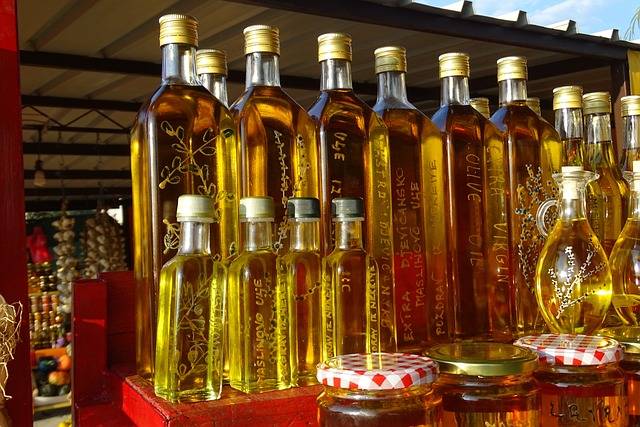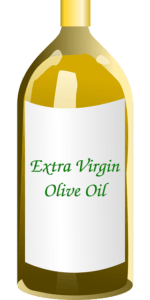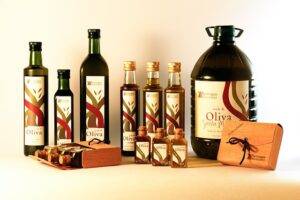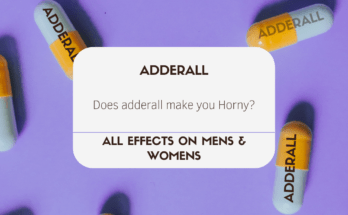How to open olive oil bottles
Finding a strategy to keep your hands free while cooking can be challenging. This could occur for various reasons, such as cooking for another person or wanting to try a new recipe. Oil is one solution! But how can we open a bottle of olive oil? Depending on the sort of bottle it comes in, there are various ways to open an olive oil bottle. For instance, all you need are pliers or tongs at the top and bottom if it’s in a glass bottle with a metal lid.

- Obtain a bottle of olive oil. Since most of these bottles are on the heavy side, you should use your non-dominant hand to securely grab the bottle’s neck before continuing.
- Figure out if the bottle has been properly sealed. If it is closed, you can move on to step 7; otherwise, continue reading.
- It would be best if you released the pressure by any means necessary (or a metal cap). Remove the cork as soon as possible from all glass surfaces, including windows, doors, or even walls.
- Take your pick of two methods for removing the annoying cap from your bottle of olive oil. Some methods include using a heavy book or a terrifyingly sharp knife to hammer on it (this will likely get the job done). Use caution before using any of these tactics, as they may put you in harm’s path.
- The time to act is now if you have decided to take one of the more traditional routes we outlined in the fourth stage. Standing up and holding on to something solid (like a wall) will help, but the olive oil bottle could go everywhere if your attempt fails.
- The sixth step is to remove the cork (or metal cap), which marks the end of this process.
- Do whatever it takes to get away from the bottle opener (see step 3). If you keep holding on, you’ll feel pain in your palm from the blood being sucked out by the olive oil bottle’s narrow neck. To prevent septicemia, exposed wounds should be closed if at all possible.
- Wrapping the wound(s) in gauze or cloth and applying pressure does this. Properly sanitize your living space before going back to sleep, since dirty environments can harm people and olive oil bottles.
Congratulations! To have gotten this far indicates that you have successfully cracked the olive oil bottle, even without the aid of people or any kitchen equipment! If anyone else is in the room, ensure they are preoccupied or utterly oblivious to what is happening; otherwise, it could end horribly for both of you.
A Detailed Discussion on Benefits of Olive Oil

Olive oil contains essential nutrients that are useful for our health. It is high in monounsaturated fatty acids such as oleic acid and omega-3 fats, strengthening blood vessels and lowering LDL cholesterol, lowering the risk of heart disease. Olive oil also includes antioxidants such as vitamin E; polyphenols, which function as antioxidant compounds to neutralize dangerous free radicals; lignans and phytoestrogens; and minerals such as magnesium, limestone, iron, and potassium.

Olive oil has the following health benefits: Antioxidant benefits against inflammatory disorders such as arthritis and asthma are among the advantages. There is some evidence that eating extra virgin olive oil increases good cholesterol (HDL) values while decreasing triglyceride levels. The extra virgin olive oil antioxidants, especially oleuropein and tyrosol, protect cells from free radical damage. Olive oil’s monounsaturated lipids help lower LDL, or “bad” cholesterol, while maintaining HDL, or “good” cholesterol. A diet high in olives & olive oil may lower a person’s chance of acquiring gallstones.
Difference Between Extra Virgin Olive Oil and Normal Olive Oil
High-quality olives undergo a first cold pressing to produce extra virgin olive oil. In terms of health advantages, it is a “premier” product and contains the highest concentrations of healthful plant chemicals, such as antioxidants. Standard or regular olive oil is produced through later pressings. Sadly, it also has a higher concentration of natural trans fat, a form of dietary fat that promotes heart disease by elevating “bad” LDL cholesterol and lowering “good” HDL cholesterol.

Numerous varieties of extra virgin olive oil contain varying quantities of phenol, but typically they comprise between 0.8 and 5 grams per liter (0 to 5 milligrams per kilogram). The amount is based on when the fruit is collected and how it is pressed, as well as other variables such as the olives’ age. Based on when the fruit was picked and how it was pressed, regular olive oil has between 0 and 2 grams per liter (0 and 2 milligrams per kilogram) of phenols per liter (0 and 2 milligrams per kilogram).
Phenols contribute to the health advantages of extra virgin olive oil, particularly its antioxidant activity. Even though olives are naturally green, most olive oil produced today is amber (reddish yellow) because the fruit is not pressed until it is overripe and, therefore, deeper in hue. This does not necessarily imply that olive oil with a dark green hue is superior.
A recent study discovered that while greater phenol concentrations were related to the more strong flavor and weaker peroxide value, there was no correlation between these characteristics with the overall sensory scores of extra virgin olive oils. The conclusion: To derive the most outstanding health advantages from this plant ingredient, look for an extra virgin olive oil containing at least 0.8 grams of total polyphenols per liter.
>>>>>>>>You may purchase any type of bottle for a reasonable price Click here.<<<<<<<<<<<<
FAQ’s
Does olive oil need to be in a Dark Bottle
Store olive oil in a pitch-black glass bottle or a stainless steel bottle to protect it from light. This will prevent the oil from being exposed to the sun. If you purchase olive oil in a large tin, pour smaller quantities into a glass vial to use as needed. Olive oil’s enemies are oxygen, light, and heat. When exposed to these factors, the oil will get rancid faster. Proper storage is the best way to avoid this (and extend the shelf life of your oil).

Oil should be kept in a dark, cold, and dry cabinet, away from heat and light. Choose a location away from the oven in the kitchen. The ideal temperature for keeping oil is 57 degrees, while 70 degrees is also acceptable.




